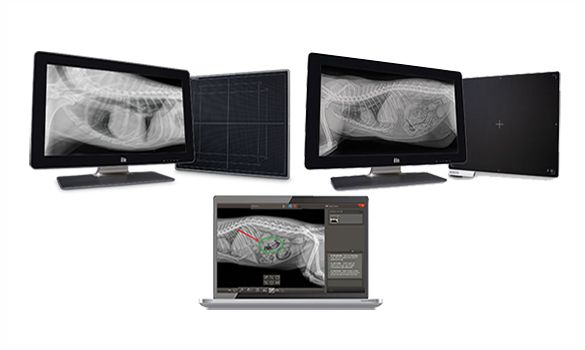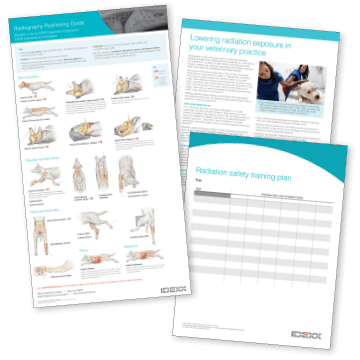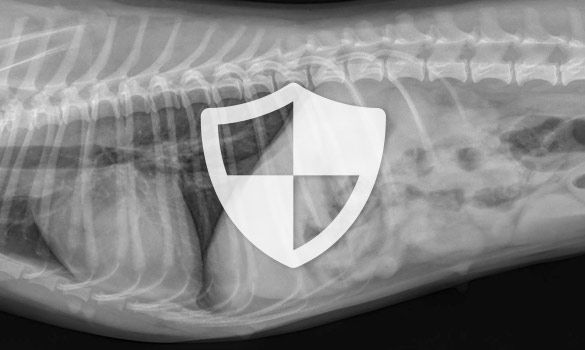IDEXX Veterinary Radiation Safety Center
Learn how to make your practice safer with reduced radiation exposure.
Why does radiation safety matter?
The smallest amount of radiation exposure can pose a health risk to the whole practice. Veterinary technicians may be particularly at risk, as they typically capture x-ray images. X-rays scatter in all directions, even when an animal is sedated and/or positioning devices are used.1
There are potential side effects of radiation exposure including increased risk of cellular damage that can have health consequences.2
Use this checklist to decrease radiation exposure and keep you and your staff safe.

3 in 4 veterinary technicians are women of childbearing age3
Protect your team
Implement exposure precautions and occupational dose limits.
Lower the dose with ALARA
ALARA stands for "as low as reasonably achievable." This radiation safety principle4 offers simple guidelines for veterinary technicians, including these:

Minimize the time
Limit time in the x-ray suite and avoid retakes by using a technique chart.

Double the distance
Maintain distance between the body and the radiation source using sedation and sandbags or nonmanual restraints to secure patients.

Use personal protective equipment
Use absorber materials like lead aprons, gloves, and thyroid shields, as well as permanent barriers.
Follow your state's radiation guidelines
Make sure your practice is following your state's local radiation guidelines. Find your state's current guidelines here.

Unmatched diagnostic image quality. Low dose of radiation.5
Learn more about how IDEXX diagnostic imaging systems keep veterinary teams safer.
Safe imaging is optimal imaging. Make radiation safety a priority at your practice.

Free radiation safety toolkit
- Diagnostic imaging poster
- Radiation safety article
- Radiation safety training plan
Learn more about radiation safety with these IDEXX resources

Webinar
Achieve Lowest-Dose Radiation: Radiation Safety Is Your Safety
This presentation reviews the use of the ALARA principle (as low as reasonably achievable) as well as optimization of image and dose by applying ALARA. ALARA guidelines on education, equipment selection, and anatomic radiographic techniques selection help reduce veterinary patient dose, which reduces occupational staff and general public exposure as well.
References
-
Busch HP, Faulkner K. Image quality and dose management in digital radiography: a new paradigm for optimisation. Radiat Prot Dosimetry. 2005;117(1–3):143–147. doi:10.1093/rpd/nci728
-
Radiation Safety Relating to Veterinary Medicine and Animal Health Technology in California. Sacramento, CA: California Veterinary Medical Board; 2012. www.vmb.ca.gov/forms_pubs/radguide.pdf. Accessed July 27, 2021.
-
NAVTA 2016 Demographic Survey Results. Schaumburg, IL: National Association of Veterinary Technicians in America; 2016. https://cdn.ymaws.com/www.navta.net/resource/resmgr/docs/2016_demographic_results.pdf. Accessed July 27, 2021.
-
Do KH. General principles of radiation protection in fields of diagnostic medical exposure. J Korean Med Sci. 2016;31(Suppl 1):S6–S9. doi:10.3346/jkms.2016.31.S1.S6
-
Data on file at IDEXX Laboratories, Inc. Westbrook, Maine USA. Based upon comparison of IDEXX systems to comparable digital imaging systems currently available in the veterinary market.
